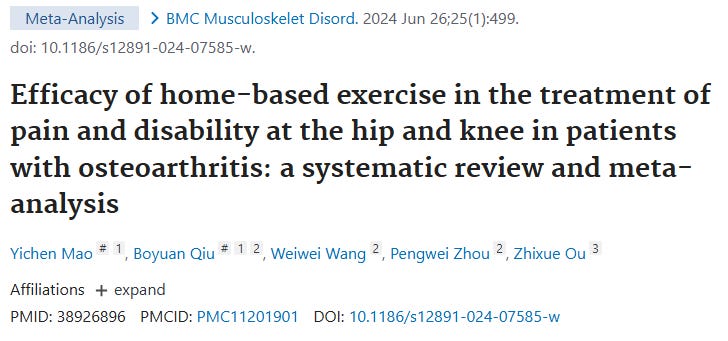KILL KNEE PAIN BEFORE IT KILLS YOUR LIFE
Osteoarthritis won’t go away but you can take control before it takes you out.
Stiff knees.
Cracking joints.
Every squat feels like a negotiation.
If you’re dealing with knee osteoarthritis, you already know the drill:
The pain is real.
The frustration is worse.
And the advice? Usually garbage.
But here's the truth:
You don’t need to give up. You need to get smart.
Let’s break down the actual science on what works and what’s just wishful thinking:
1. DOES EXERCISE REALLY WORK?
Everyone tells you to exercise.
But is it actually the reason your pain improves?
A meta-analysis of over 100 clinical trials asked the hard question—and the answer was clear:
✅ Exercise helps
❌ But we still don’t know exactly why
The improvements might not come directly from exercise—it could be the effect of moving more, building confidence, or simply showing up for your body.
👉 Moral of the story?
Still do it. But don’t expect miracles overnight.
2. YOU DON’T NEED TO TRAIN LIKE A BODYBUILDER
Here’s what the data shows:
Resistance training works
3 to 6 months is enough to see change
Volume doesn’t matter as much as you think
So forget chasing PRs.
Forget crippling soreness.
👉 Smart, consistent training > heroic suffering
Even moderate resistance work reduces pain and improves function.
3. CAN’T GO TO THE GYM? NO PROBLEM.
Home-based programs are just as effective.
Researchers found that simple routines done in your living room can:
Reduce pain
Improve joint mobility
Restore daily function
👉 You don’t need machines. You need a mat, some structure, and the discipline to show up.
4. HAD SURGERY? YOU STILL NEED TO TRAIN
Total knee replacement isn’t the end of the road, it’s just the beginning of your comeback.
If you skip post-op training?
Your strength stalls
Your mobility regresses
Your pain lingers
👉 Add resistance work to your rehab plan.
It’s not just about healing, it’s about reclaiming performance.
5. SPECIAL NOTE FOR POSTMENOPAUSAL WOMEN
If you’re postmenopausal, you’ve got a unique battle.
Hormonal shifts make joint pain, stiffness, and weakness more common.
But targeted training still works.
One study showed:
Function improves
Movement gets easier
Quality of life rises
👉 You might not erase pain entirely but you will move better.
And that’s what counts.
FINAL TAKE
You don’t need perfect form.
You don’t need to be pain-free.
You just need to move.
✅ Resistance training
✅ Home-based exercises
✅ Post-op rehab
✅ Realistic expectations
✅ Relentless consistency
Because pain doesn’t have to mean decline.
It can mean a wake-up call!
For similar insights but for the back this time, check this article:
Sources










